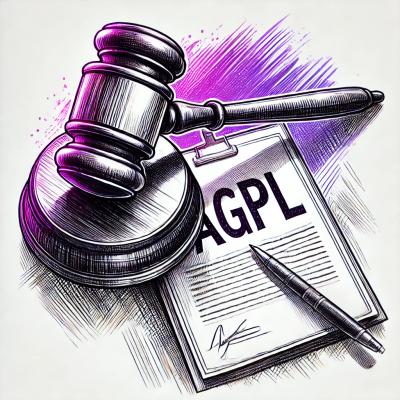
Buttercup core library
A NodeJS secrets vault.








About
Buttercup is a JavaScript password manager for NodeJS and the browser (though you can also see it used on platforms like React Native). It's based around the concept of a Vault and its secret Entry items (a login, credit card etc.). Entries are then separated into Group containers that make organising vaults a little easier.
Because Buttercup is designed first and foremost to be consumed by users in some application, VaultManager and VaultSource constructs are provided to allow for easy control over several vaults in a somewhat shared environment. A vault manager provides easy-to-use methods to perform dehydration and rehydration (storage in serialised form) of vaults to some secure storage (files, remote datasources etc.).
Buttercup can save and load vaults that are stored locally, in cloud service providers like Dropbox or Google Drive, or in a cloud service's WebDAV-enabled storage. It does this by providing a Datasource construct for each provider.
Because Buttercup can be consumed in some interesting and varied environments, serialisation tools called facades are provided to allow for greater flexibility when working with vault data structures. Facades provide a way to move data around without classes, converting vaults to and from JSON objects. Facades are used when attaching vaults to user interfaces like with the Buttercup UI library.
Features
The core of the system, this Buttercup Core, boasts a few awesome features:
- Merge-able vault contents
- History for back-tracking to previous passwords etc.
- File attachments (encrypted)
- AES CBC encryption
- GZip compression
- NodeJS and Browser support
This library also supports a variety of datasources for loading from and saving to:
Check out the changelog.
Installation
To use Buttercup in a NodeJS environment, you can simply install and require it:
npm install buttercup --save
In a Node environment, for example:
const { Vault } = require("buttercup");
Or for Typescript:
import { Vault } from "buttercup";
In a web environment, use the following:
import { Vault } from "buttercup/web";
Buttercup core is ESM - you must either import it in a project that is also ESM, or use a build tool like Webpack.
Buttercup core supports Node version 14 and up. For older Node versions use v6 and earlier.
Usage
Buttercup uses Vaults, Groups and Entrys to manipulate data in a workspace-like environment. These 3 constructs have no knowledge of encryption or storage, and simply provide interfaces for working with the data structures.
To manage vaults, their storage and their states in a higher-level manner more appropriate for building applications, check out the VaultManager and VaultSource constructs.
To get started, we should create a new Vault:
import { Vault, init } from "buttercup";
init();
const vault1 = new Vault();
const vault2 = Vault.createWithDefaults();
The init() function call is used to initialise the environment (performs the same function as @buttercup/app-env used to). It is required for Buttercup to work. It can be called more than once without effect.
Entries can't be added directly to a Vault, but can be to Groups. Creating Groups and Entries is trivial:
const vault = Vault.createWithDefaults();
const myGroup = vault.createGroup("My Group");
const myEntry = myGroup.createEntry("My Entry");
Every command on Vaults, Groups and Entries modifies the Vault instance, but does not save it to storage. There is no command or need to commit any data - each instance links back to the original Vault. Vaults are saved and loaded using Datasources:
import { Credentials, FileDatasource, Vault, init } from "buttercup";
init();
const datasourceCredentials = Credentials.fromDatasource({
path: "./user.bcup"
}, "masterPassword!");
const fileDatasource = new FileDatasource(datasourceCredentials);
const vault = Vault.createWithDefaults();
vault
.createGroup("Websites")
.createEntry("My bank")
.setProperty("username", "user-name")
.setProperty("password", "s3cureP4$$");
const vaultCredentials = Credentials.fromPassword("masterPassword!");
await fileDatasource.save(vault.format.history, vaultCredentials);
Later:
const datasourceCredentials = Credentials.fromDatasource({
path: "./user.bcup"
}, "masterPassword!");
const fileDatasource = new FileDatasource(datasourceCredentials);
fileDatasource
.load(datasourceCredentials)
.then(Vault.createFromHistory)
.then(vault => {
});
Using just a datasource is not recommended as saving and loading is quite low-level and cumbersome. Check the browser extension or desktop application for examples of how to use the VaultManager and other helpful classes.
Development
To develop Buttercup Core, clone the repository on a Linux or Mac OS machine. Ensure that you're running NodeJS version 16/18. Install all dependencies by running npm install in the project directory. Run the tests to ensure everything is functioning correctly: npm test.
Vault Formats
Buttercup currently supports 2 concurrent vault formats, as it is in the process of transitioning from Format A (legacy) to Format B. You can switch the operational format by doing the following:
const { VaultFormatB, init, setDefaultFormat } = require("buttercup");
init();
setDefaultFormat(VaultFormatB);
Buttercup will automatically transition to using Format B as the default in some weeks or months (since v5 was released).
Compatibility
Buttercup's compatibility is defined as the following:
- NodeJS version 12 and up
- Current versions of the following browsers:
- Google Chrome
- Mozilla Firefox
- Safari
- React Native 0.60+
NB: React Native support is not guaranteed under all circumstances as the platform's stability for low-level operations like cryptography is questionable. Use the mobile app as a guideline for implementation.
Browser support is strictly dependent on:
- Popularity
- The availability of required crypto libaries such as
SubtleCrypto










